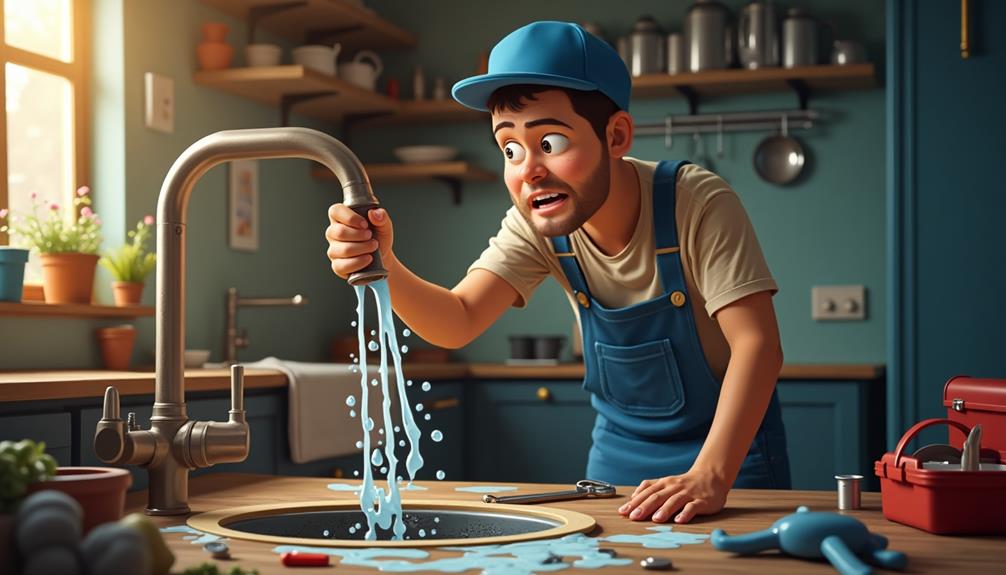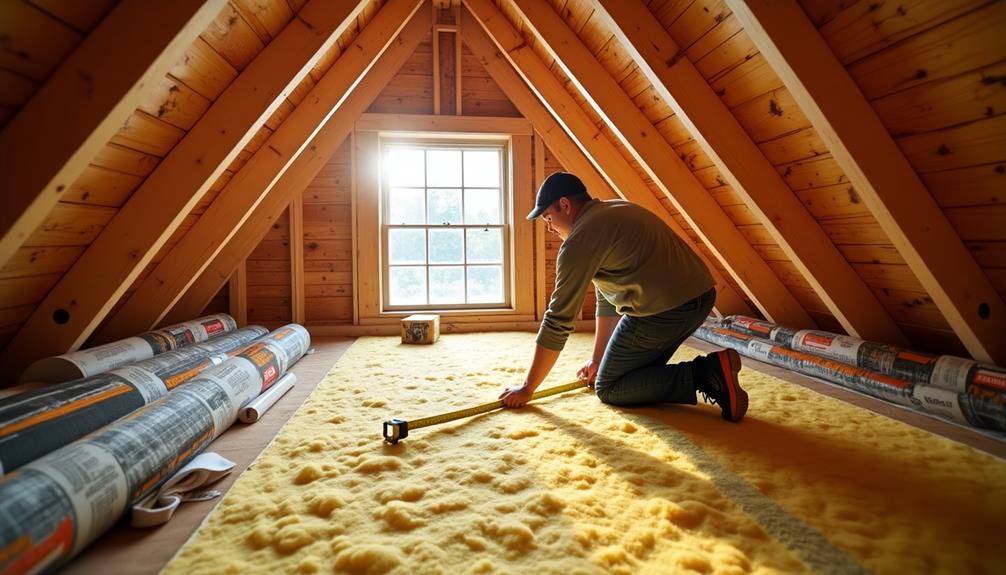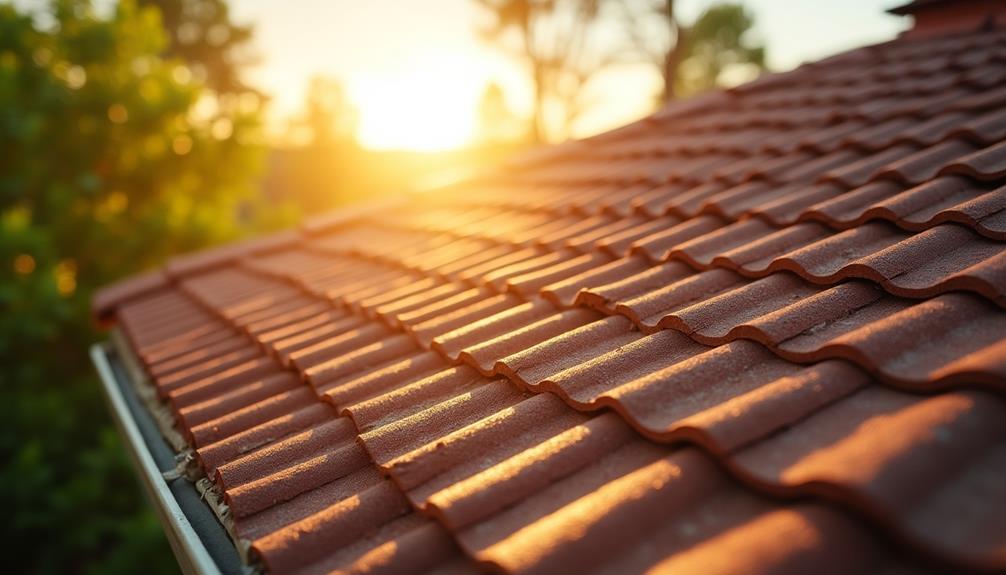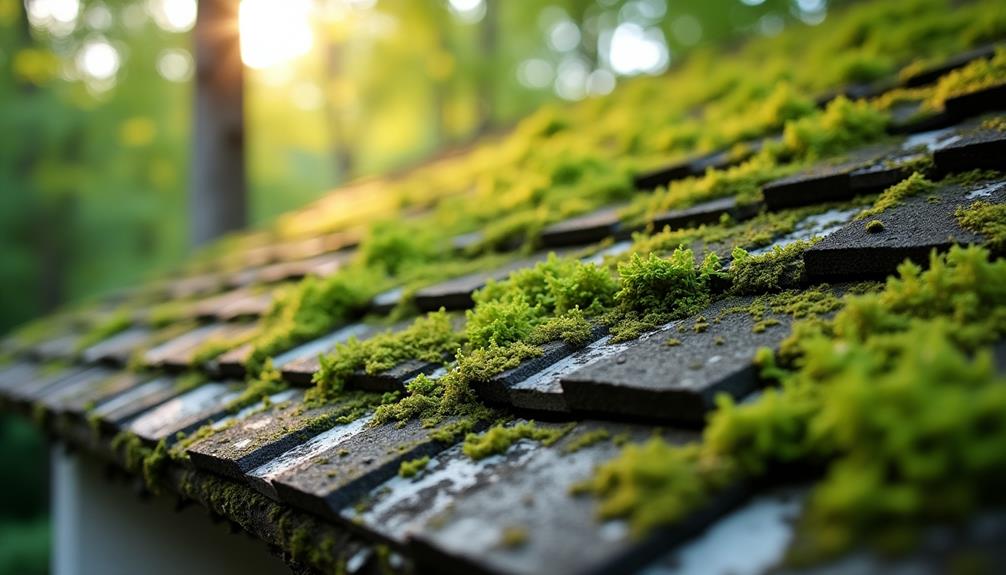Imagine waking up to a dripping faucet that won't quit, keeping you up all night. You might think it's just a minor annoyance, but ignoring such issues can lead to bigger problems down the road. By understanding common plumbing challenges and implementing simple preventive measures, you can save yourself time and money. Whether you're looking to fix a leak or prevent clogs, it's essential to know the right steps to take. So, what should you focus on first to ensure your plumbing system runs smoothly?
Understanding Common Plumbing Problems
Plumbing problems often arise unexpectedly, catching homeowners off guard. One common issue you might face is pipe corrosion, which can lead to leaks and even bursts. If you notice fixture leaks, it's crucial to address them quickly; they can escalate into more significant problems.
Additionally, sewer backups are another major concern, often caused by clogs in your drainage systems. Regularly checking your plumbing can help you avoid these messy situations.
Water heater malfunctions can also disrupt your daily routine, especially when you need a hot shower. Don't forget about frozen pipes during colder months; they can crack and cause water damage. Maintaining a proper pressure balance in your plumbing system is essential to prevent these issues.
Inadequate drainage can lead to flooding and further complications, so keeping an eye on your drainage systems is wise.
Lastly, familiarize yourself with local plumbing codes, as they dictate proper installations and repairs. This knowledge can save you time and money when addressing any plumbing issues.
Preventive Maintenance Tips
Taking proactive steps can save you a lot of headaches when it comes to plumbing issues. One of the best ways to maintain your plumbing system is by scheduling regular pipe inspections. These inspections help identify potential problems before they escalate into costly repairs. Look for a qualified plumber to carry out these checks at least once a year.
In addition to annual inspections, make seasonal checks part of your routine. For instance, before winter hits, ensure your pipes are insulated to prevent freezing. During spring, check for any leaks or signs of wear and tear that may have developed over the winter months.
Don't forget your gutters and downspouts—keeping them clear can prevent water damage to your home's foundation.
Another simple preventive measure is to be cautious about what you flush or pour down the drain. Avoid putting grease, coffee grounds, and other debris down your sinks or toilets.
How to Fix Leaky Faucets
A leaky faucet can be more than just a minor annoyance; it can waste a significant amount of water and increase your utility bills.
Fortunately, fixing it's usually a straightforward task. First, identify the faucet type—compression, cartridge, ball, or ceramic disc—because each has different repair methods.
Gather your repair tools, including a wrench, screwdriver, and replacement washers or cartridges. Start by turning off the water supply to avoid any mess.
Next, plug the drain to prevent losing small parts. Remove the faucet handle by loosening the screw, then lift it off.
For compression faucets, check the washer and replace it if it's worn. For cartridge faucets, you might need to replace the entire cartridge.
If you're dealing with a ball faucet, ensure the seals are intact. Finally, reassemble the faucet, turn the water supply back on, and test it for leaks.
Dealing With Clogged Drains
When water refuses to drain properly, it can disrupt your daily routine and create a potential mess. Clogged drains are a common issue, but with the right approach, you can tackle them effectively.
First, try using a plunger. This simple plumbing tool can create enough pressure to dislodge minor clogs. Make sure to cover any overflow openings to ensure maximum suction.
If plunging doesn't work, consider drain cleaning solutions. You can find chemical drain cleaners in stores, but be cautious; these can be harsh on your plumbing.
Alternatively, try a natural solution by pouring baking soda followed by vinegar down the drain. After a few minutes, flush it with hot water.
For stubborn clogs, you may need to use a plumber's snake or a drain auger. These plumbing tools can reach deeper into pipes to remove blockages. Always remember to wear gloves and safety goggles when dealing with clogs or cleaning agents.
Regular maintenance can also prevent future issues. Consider using a drain strainer to catch debris and performing routine drain cleaning to keep your pipes clear and functioning smoothly.
Managing Running Toilets
Noticing a running toilet can be frustrating, as it not only wastes water but also increases your utility bills.
Fortunately, fixing this issue is often straightforward. Start by checking the toilet flapper, the rubber component at the bottom of the tank. If it's worn or damaged, it may not create a proper seal, causing water to leak continuously into the bowl. Replacing the flapper is an easy, cost-effective fix—just drain the tank, remove the old flapper, and install a new one.
Next, inspect the chain connected to the flapper. If it's too tight or too loose, it can affect the flapper's operation. Adjust the chain length so it allows the flapper to close completely when you flush.
If the toilet continues to run after these adjustments, you may need to make some tank adjustments. Check the float, which controls the water level in the tank. If it's set too high, water will overflow into the overflow tube, leading to a running toilet. Lower the float to ensure the water level is appropriate.
Addressing Water Pressure Issues
After managing running toilets, you might find that water pressure issues in your home can also impact your plumbing system. Low water pressure can make everyday tasks frustrating, while excessively high pressure can cause leaks and damage.
Start by checking your faucets and showerheads; if they're weak, it may indicate a larger problem.
One common culprit is a malfunctioning pressure regulator. This device controls the water pressure entering your home and can wear out over time. If you notice fluctuating pressure, inspect the regulator. Adjusting it can sometimes resolve the issue, but if it's broken, you'll need to replace it.
Another step is to check for clogs in your pipes. Mineral buildup can restrict flow and lead to low pressure. You can remove these clogs by using a vinegar solution or a plumber's snake.
When to Call a Professional
Knowing when to call a professional can save you time and money.
If you notice signs of serious problems, like persistent leaks or water damage, don't hesitate to reach out for help.
Complex repairs and urgent situations are best handled by an expert who can ensure everything's fixed properly.
Signs of Serious Problems
Sometimes, it can be tough to determine when a plumbing issue requires professional intervention. However, there are clear signs that suggest it's time to call in the experts.
If you notice unusual smells coming from your drains or around your home, it could indicate a serious problem, such as a sewer line issue or a blocked drain. Don't ignore these odors; they often signal that something's not right.
Another red flag is the appearance of water stains on your walls or ceilings. These stains can indicate leaks hidden behind the surface, which may lead to extensive damage if left unchecked. Pay attention to any discoloration or bubbling paint, as these can be signs of moisture buildup.
If you experience frequent clogs, persistent dripping, or fluctuating water pressure, it's wise to consult a plumbing professional. Trust your instincts—if something feels off, don't hesitate to seek help.
Addressing these serious issues promptly can save you from costly repairs down the line and ensure your plumbing system operates smoothly. Remember, it's always better to be safe than sorry when it comes to your home's plumbing.
Complex Repairs Required
When it comes to plumbing, not every issue can be handled with a simple DIY fix. Some problems require expertise, experience, and specialized tools. If you're facing a situation where you're unsure of the cause or solution, it's a good idea to call a professional.
For instance, if you notice frequent clogs or slow drainage, you might need a sewer inspection to identify underlying issues like tree roots or collapsed pipes.
Additionally, if you're dealing with leaking or damaged pipes, it may be time for pipe replacement. Attempting to replace pipes without the necessary skills can lead to further damage or even flooding.
Don't hesitate to reach out for help if you spot signs of more serious plumbing issues, like water damage or unusual noises in your plumbing system.
Professionals can provide the right diagnosis and ensure that repairs are done correctly and safely. Remember, investing in professional services can save you time, money, and headaches down the line.
When in doubt, it's always better to leave complex repairs to the experts.
Time Constraints and Urgency
How can you tell if a plumbing problem demands immediate attention? It's crucial to recognize when a minor issue could escalate into a disaster. If you notice water pooling around your floor or a sudden drop in water pressure, you might be facing an emergency plumbing situation. These issues can lead to significant property damage and costly repairs if not addressed quickly.
Time management plays a key role in determining whether you should tackle the problem yourself or call in a professional. If you're dealing with a leaky pipe that's causing water to seep into your walls, don't wait. The longer you delay, the more damage can occur.
On the other hand, if you're facing a simple clogged drain, you might try using a plunger or a drain snake first. However, be cautious—if these methods fail and the situation worsens, it's time to call in an expert.
Prioritizing your time and understanding the urgency of the issue can save you from a plumbing disaster and ensure your home stays safe and dry. Remember, when in doubt, it's better to call a professional sooner rather than later.







